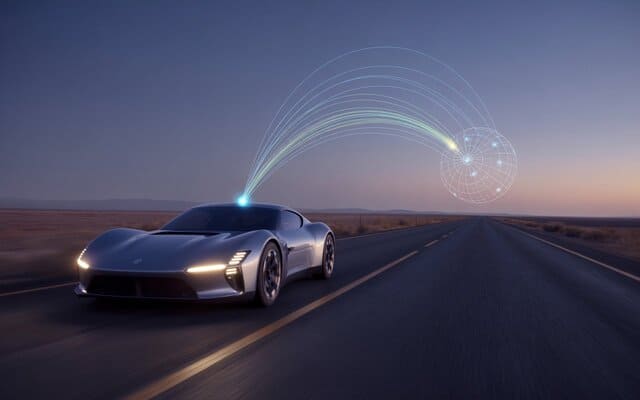Looking for high-speed internet anywhere in the world? Starlink, SpaceX’s groundbreaking low-earth-orbit (LEO) satellite network, is revolutionizing global connectivity in 2025.
Serving millions across over 100 countries, Starlink delivers broadband to remote and urban areas alike.
This article dives into how Starlink is reshaping internet access, its technical specs, global impact, challenges, and what’s next for this game-changing technology.
What is Starlink and How Does It Work?
Starlink is a constellation of thousands of LEO satellites, orbiting at about 550 km, providing high-speed broadband via radio signals.
Unlike traditional geostationary satellites at 36,000 km with high latency, Starlink offers speeds up to 500 Mbps (peaking at 1 Gbps in tests) and latency of 20-40 ms, perfect for streaming, gaming, and video calls.
Users receive a kit with a compact dish antenna (“Dishy”), a Wi-Fi 6 router, and cables. Setup is user-friendly, with auto-alignment via a mobile app for iOS and Android. In 2025, Starlink operates around 12,000 satellites, with plans to reach 42,000, ensuring seamless global coverage.
Global Impact: Connecting the Unconnected
Starlink is bridging the digital divide in areas lacking fiber optic infrastructure.
From rural Alaska to isolated Pacific islands, Starlink connects over 7 million users worldwide, empowering communities with fast internet. Its impact is profound:
- Education: Remote schools access online platforms like Coursera, enabling digital learning.
- Business: Small businesses in underserved areas sell globally via e-commerce platforms.
- Emergencies: During natural disasters, like wildfires in California, Starlink supports first responders with reliable connectivity.
Airlines (Delta, United) and cruise lines (Royal Caribbean) now use Starlink for onboard Wi-Fi, while remote communities, like those in northern Canada, leverage it for telehealth and cultural preservation.
Technical Performance: Speed, Latency, and Reliability
Tests in 2025 show Starlink delivering average speeds of 150-300 Mbps in rural areas and up to 500 Mbps in regions with dense satellite coverage.
Latency of 20-40 ms rivals fiber, supporting competitive gaming like Call of Duty and smooth Zoom calls. In urban areas with high user density, speeds may dip to 80-120 Mbps during peak times due to network congestion.
The Starlink Gen 3 router, with Wi-Fi 6E and 6 GHz band support, boosts stability. The Gen 3 dish operates in extreme conditions, from -30°C to 50°C, and withstands winds up to 60 mph.
However, obstructions like dense trees or tall buildings can disrupt signals, requiring open-sky placement.
Pricing and Accessibility: Worth the Cost?
Starlink’s pricing in 2025 varies by region:
- Initial Kit: $599-$799, including dish, router, and cables.
- Monthly Subscription: $120 (residential), $250 (business), or $500 (maritime/mobility).
- Roam Plan: $150/month for mobile users, like digital nomads.
While the upfront cost is steep, no long-term contracts and the ability to pause service add flexibility.
Compared to urban fiber plans ($50-80/month), Starlink is pricier but unmatched in remote areas. Seasonal discounts, like 15% off kits, drive adoption in 2025.
Challenges and Limitations
Starlink faces hurdles:
- Network Congestion: High user density in cities can slow speeds.
- Environmental Concerns: The vast constellation raises fears of space debris and astronomical interference.
- Regulations: Some countries restrict Starlink over data security concerns.
- Upfront Cost: The kit price may deter low-income households.
SpaceX addresses these with inter-satellite laser links for lower latency and a satellite recycling program to reduce space junk.
Starlink vs. Competitors: How It Stacks Up
Starlink dominates satellite internet in 2025, but competitors loom:
- Amazon Kuiper: In early stages, targeting similar speeds with fewer satellites (3,236 planned).
- OneWeb: Focuses on enterprise and government, with limited consumer reach.
- Fiber Optic: Cheaper and more stable in cities, but impractical in remote areas.
Starlink excels in global coverage and ease of use, though Kuiper could challenge on price in the future.
The Future of Starlink in 2025 and Beyond

SpaceX aims to launch 10,000 more satellites by 2027, expanding network capacity.
Innovations like smaller flat-panel antennas and 5G/6G integration promise lower costs and faster speeds.
Starlink is testing Direct-to-Cell service, connecting smartphones directly to satellites, potentially disrupting mobile networks in remote areas.
In 2025, Starlink expands partnerships with airlines and telecoms, while exploring voice-over-IP services. Expect wider adoption in rural U.S. regions and enhanced plans for mobile users.
Conclusion: Is Starlink the Future of Internet?
Starlink in 2025 is delivering on its mission to connect the world, bringing high-speed internet to places fiber can’t reach.
With competitive speeds, easy setup, and global coverage, it’s a lifeline for rural residents, travelers, and businesses.
Despite pricing and congestion challenges, SpaceX’s relentless innovation keeps Starlink ahead. If you need reliable internet off the grid, Starlink is a transformative investment.
Ready for internet anywhere? Check out Starlink plans on the official website and join the connectivity revolution!





